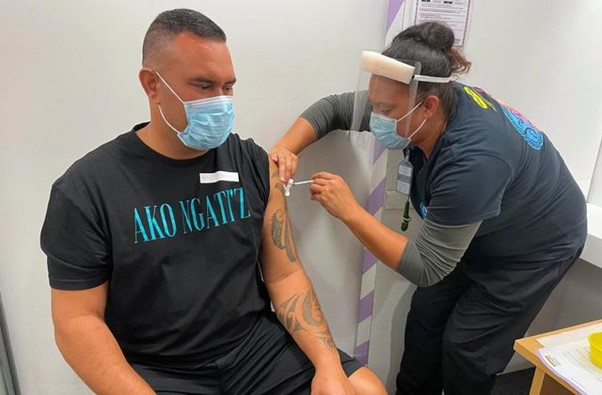Employment
A Comprehensive Guide: Identifying and Addressing Workplace Stressors
In today’s workplace, you can’t just focus on physical hazards. Psychosocial hazards like work stress, conflicts, harassment and traumatic incidents must also be considered. Mental wellbeing not just physical wellbeing of staff has to be the goal of a supportive workplace.
At the Policy Place, we reflect this focus for members of our online policy service throughout our health and safety policy suite. But policy isn’t enough. Within any organisation or business the first important step to prevent mental harm and injury is to identify psychosocial hazards.
To help with this, we’ve prepared the following Action Plan that is based on the Model of Practice for Managing psychosocial hazards at Work produced by Safe Work Australia. Follow the steps in it and you’ll be able to identify key hazards in your workplace warranting management via your health and safety policy and procedures.
With this information, you’ll then be able to work with your staff to assess and mitigate risks like burnout, high turnover, and psychological harm and achieve a supportive work environment where both morale and productivity are high.
Action Plan: Identifying and Addressing Workplace Stressors
1. Conduct Comprehensive Hazard Identification 🔍
Identify all reasonably foreseeable psychosocial hazards within your business or community service.
2. Recognize Cultural Hazards:
🌐 Consider cultural factors that may contribute to psychosocial hazards, such as organisational norms, cultural diversity, values, messaging and communication styles.
3. Consultation with Workers: 🤝
Engage workers in the hazard identification process, including Health and Safety Representatives (HSRs) if applicable.
4. Use Surveys and Tools:
📊 Employ surveys to gather information from staff, HSRs, supervisors, and members of the management team.
4. Observe Work and Behaviors:
👀 Observe the workplace environment, work practices, and interpersonal interactions.
5. Review Available Information:
📋 Review records of injuries, incidents, complaints, workplace inspections, staffing decisions, notes from exit interviews, absenteeism, policies, and more.
6. Identify Trends:
📈 Analyse collected information to identify trends in hazard occurrence (eg retention versus attrition in areas; absenteeism).
7. Establish Reporting Mechanism:
📝 Establish and promote ways for workers to report hazards, ensuring privacy and anonymity where possible.
8. Encourage Reporting:
📣 Address common reasons for underreporting and encourage workers to report hazards through various accessible channels.
9. Act on Reported Hazards:
⚠️ Take reported hazards seriously and implement appropriate control measures.
10. Adapt Reporting Systems Proportionally:
🔄 Tailor reporting systems to the organization’s size and risk profile.
What about fair treatment for Kiritapu Allan?
Fair treatment for Kiritapu Allan would have resulted in a different decision. She has not been afforded due process and as a result, the Prime Minister’s decision to revoke her Ministerial portfolios is unfair.
Employees, who like Kiri are charged with criminal offending, at least have the benefit of some basic employment protections. In this post, we look at those protections. We question why Ministers of the Crown are not afforded the same rights. Kiri Allan’s case, we argue, shows the unfair results.
Code of Conduct
At the Policy Place we see many different Codes of Conduct. They are generally similar and the one applicable to Ministers of the Crown is no exception. Like many others that apply in New Zealand workplaces, the Cabinet Manual states expectations of high ethical and behavioural standards by Ministers.
Unlike many other Codes of Conduct, the Cabinet Manual specifically applies these standards to a Minister’s personal life. However, there is an equivalent obligation in other Codes of Conduct -an employee’s obligation to refrain from any act or omission that could reasonably bring their organisation/employer into disrepute.
Fair treatment in employment
If an employee is charged with an offence or breach of Code of Conduct, they must be treated fairly in NZ law. In the criminal justice system, this means they are entitled to the presumption of innocence.
In their employment, the person who is charged with an offence, has the right to due process before any decision should be made about their employment. An impartial and fair investigation must be undertaken and the person given a fair and reasonable opportunity to answer allegations, including the opportunity to access support and advice. Only after a fair hearing and consideration of issues should any decision be made about what has occurred and then, about the appropriate action to be taken.
A criminal charge or conviction for acts committed outside of work will not always warrant disciplinary action. There must be a sufficient connection between the work role and the charge (Managing an employee charged with a criminal offence.) Even if the charge is relevant to the role, it may not justify dismissal. Other consequences, like a warning, might be more appropriate. It will depend on the circumstances.
Unfair treatment
Employment law doesn’t apply to elected officials nor to decisions about Ministerial appointments.
Yet, due process rights apply to a whole raft of decisions. Decisions about ministerial roles have significant personal and professional ramifications for ministers that are analogous to loss of employment.
For these reasons, Ministers of the Crown should be entitled to equivalent protections.
Bad decisions
An employer’s failure to adhere to due process in employment can lead to bad decisions not just for staff but also for the workplace.
Decisions about ministerial roles are similar to employment decisions. If Ministers are not afforded due process, its more likely that bad decisions will be made. Kiri Allan’s situation demonstrates this:
- She appears to have been given no real time to properly consider and respond to the allegations against her and to access the support she needed to respond
- A full and fair investigation does not appear to have been undertaken before the PM decided she was not fit to hold a Ministerial Warrant
- No regard seems to have been given to whether Kiritapu could continue to hold some but not all of her Ministerial roles. For example, she steps down as Minister of Justice but continue as Minister for Regional Development where the criminal charges are less relevant.
- The PM referred to mental distress as the context for the criminal charges against Kiritapu. However, her mental distress doesn’t appear to have influenced or discouraged him from rising to a quick decision about her ministerial warrant.
- No regard appears to have been given to the Crown obligation of active protection under Te Tiriti o Waitangi in this case. That obligation requires the Crown to actively redress inequities experienced by Māori. Wāhine Māori in politics experience significantly more adversity and distress than others. The impacts of this on Kiri Allan should have been considered before any decision was made.
Conclusion
We expect a lot of our politicians. At the very least, they should be afforded the same basic protections as staff.
The Cabinet Manual needs to be changed to reflect this. If not, we are likely to continue to see bad processes leading to bad and reactionary decisions.
Induction Policy
Do you need an induction policy or not? In this post, we look at the pros and cons of having a policy and some induction essentials.
What is induction and should everyone do it?
Induction is a process used to welcome and onboard a new person to your worksite. Your worksite may be a physical place or remote online environment.
The inductee may be a new employee, member of governance, contractor, student, intern or volunteer. As a rule of thumb, everyone should be inducted to a new working environment.
What should Induction cover?
Induction introduces a person to the culture, relationships, and processes of an organisation. It helps set the tone for their ongoing participation. It’s important therefore to get it right in terms of how you do it and what you cover.
Things to think about and prepare when inducting include:
- role expectations and responsibilities
- relevant health and safety matters
- the welcome process (respectful and responsive to the cultural background of the new appointee (eg mihi whakatau))
- arrangements to address the new appointee’s support needs (eg reasonable accommodation for disability)
- access to key organisational documents and systems
- communication channels
- a tour of the worksite which, for a physical site, includes evacuation points and emergency exits
- relationships and people the new appointee is likely to interact with.
For temporary and contract roles, induction will be different. It will cover essentials like relevant health and safety matters but may be more task-focused.
Should you have an Induction Policy?
It is necessary to properly induct people to a worksite. But you can do what’s required without necessarily having a specific Induction policy.
Benefits of an Induction Policy
In Are you missing out? Is good policy what you need? we talked about the benefits of having good policies. The benefits of an Induction policy include:
- That the status of “policy” helps signal that Induction is important, a “must-do” rather than “nice-to-have”
- The policy can guide what should be covered, when it should be covered and who is responsible for it
- That policy will help promote consistency in how induction is undertaken across the organisation.
But it’s not always best….to have everything in policy:
- Less is often more when it comes to policies. Too many can become unworkable and discourage people from using them.
- Induction should be responsive to an individual skill level and job role. Policies can sometimes impede responsiveness if an organisation has a top-heavy sign-off and approval process for when changes to a process in a policy are made.
Policy isn’t the only way to provide guidance about induction. At the Policy Place, we often use Checklists and diagrams as quick guides for our members on processes. There are other options too including:
- Practice Notices
- Team meetings
- Charts
- Videos
- Email communications
- Workplace News
- Training (paper and online modules)
- Coaching
- Mentoring
Consider preferences for an Induction Policy
People have different preferences for how they like to be guided and informed. Consider these preferences when deciding if you need an Induction policy for your workplace.
If your staff are kanohi-ki-te-kanohi (face-to-face) type of people and you’re in a relatively small workplace, your best strategy may be to minimise policy content and prescribe procedures like Induction in a more “hands-on” way. A Checklist coupled with a formal acknowledgment and sign-off from the responsible manager and inductee that induction was completed might just do the trick.
Proof that induction is done and dusted is important whatever strategy you choose for induction.
On the other hand, if you’re a big workplace with a number of managers and staff who are responsible for induction, a policy may well be your best strategy. It will help build consistency into your process and as an organisational policy, is more likely to be taken seriously.
At The Policy Place, we cover the following in our Induction Policy:
- The reason/purpose of the policy
- Who’s Responsible
- Key Requirements
- Compliance
- Date when policy should be reviewed.
Helpful links
For our online Policy Place users, we incorporate Helpful links. These are links that our clients can access for related online information. From our Induction policy page, for example, our client can access our online Recruitment and Selection policy and Health and Safety Responsibilities policy page.
We often include relevant external links for legislation and resources like:
Check these resources out if you’re needing more help with your Induction Policy or process. Better still, if you don’t want to any more worry about writing, reviewing and updating policies, get in touch with us now. We offer online and bespoke policies and want to lighten your workload.

Contractor or Employee – what’s the difference?
The NZ Employment Court’s decision (Uber case) issued 25 October 2022 is likely to have some big ramifications for the workforce.
Social service, health and community agencies and iwi, Māori services, subject to Social Sector Accreditation and Health and Disability Standards, may be affected.
Contractor versus Employee – why does it matter?
The case concerned the difference between an employee relationship and independent contractor. It involved four Uber drivers claiming that they were employees and were therefore entitled to minimum statutory entitlements like sick pay and paid holidays.
The difference between an employee and contractor has long been a challenging and contested issue. It has particularly important ramifications today given more use of remote working and a labour shortage in Aotearoa/NZ that is associated with more use of independent contracting.
The issue of contracting versus employment status also has pressing justice implications. Independent contracting can exploit and compound the disadvantages and hardship experienced by vulnerable populations, such as migrants and refugees. These groups may be most in need of statutory employment protections and entitlements. Yet, if they are unfamiliar with our law they may be more likely to enter contractual relationships that remove these entitlements from them.
The Court’s approach
The Uber case was about the status of the four Uber drivers. The court focused on the nature of the relationship between Uber and the drivers (as required under sections 6 (2) and (3) of the Employment Relations Act 2000.)
While the drivers claimed an employment relationship, Uber argued it was an intermediary platform that facilitated a contractual relationship between its drivers and those providing or wanting a service. The Court found against Uber because of evidence showing the company had a high degree of control over the drivers. Although the control was less direct and had a different look and feel from the more classic employment relationship, the Court found Uber’s ability to control the drivers was just as strong. The technology they used did not take the control away. Rather, it helped the company exert control in a myriad of ways.
Implications
The Employment Court clarified that this case was about the employment status of the four Uber drivers. It was not a declaration about the status of all Uber drivers. However, it will clearly have ramifications for Uber.
It may well have implications in other areas. At the Policy Place, for example, we work with organisations in service industry where it is not uncommon for facilitators, carers, advisors and counsellors to be engaged as independent contractors.
Time for review

Review use of contractors
In the wake of the Uber case, it may be timely to review and rethink contracting arrangements. Be open-minded and think carefully about the role undertaken by a contractor – how much control they have over when and how they do their mahi/work, who benefits, whether they can grow and diversify and who controls things like pricing and performance.
Be wary of assumptions and keep in mind that:
- A contract that states a person is not an employee will not be the end of the matter. You can’t simply contract out of the Employment Relations Act 2000.
- A person can work for more than one organisation and still be an employee. As the Court noted in the Uber case, many workers these days work for multiple employers juggling part-time work.
- Flexibility and choice can be part of working as a contractor or employee. A casual employee can work variable hours as much as an independent contractor. With flexible and remote work these days, many even in full-time work can set and vary their own hours
- Although it’s more typical for a contractor than an employee to use their own tools and assets like a car, device and phone for work, this won’t be determinative. It can be a strong sign of the degree of inequality and control that one party has over the other ie that the party in control can move their costs and liabilities to the other party
- There is more mana and justice in contractual relationships that are based on informed agreement. If a person is unfamiliar with reading English and contracts, support them to obtain information and advice about the type of arrangement they want to enter – a contracting or employment relationship.
Alcohol and drug use at work – Top Tips
1. Prevention
Information
Management ensures staff are informed about the risks of consuming alcohol and drugs.
Even with out-of-hours consumption there are risks. Hangover, for example, can mean poor concentration, carelessness on the job, fatigue, risky behaviour leading to injuries and fatalities. A staff member/kaimahi who is known to drink excessively or consume drugs at or outside of work also risks the reputation, credibility and trust the community has in the organisation.
Encourage self-management
Provision for:
- staff to self-manage for the effects of their alcohol and drug use on their work
- all staff to be alert to the risks posed by themselves and their colleagues from alcohol and drug use
- voluntary disclosure to management by staff if they are concerned about their alcohol and drug use and its effect on their ability to work safely.

2. Respect rights
3. Rehabilitation
Contact us

Matariki opportunities and significance in the workplace
June 24, 2022 is going to be the first day on which we celebrate Matariki as a country. It’s our first official indigenous public holiday and the first time we recognise the Māori calendar – maramataka.
The intention to legislate for Matariki was announced on 4 February 2021. It became law last night – Te Pire mō te Hararei Tūmatanui o te Kāhui o Matariki/Te Kāhui o Matariki Public Holiday Act.
What Matariki means for your workplace
Dates will change
The holiday is not always going to be 24 June. It’s going to be observed annually on the dates set out in the legislation for the next 30 years and beyond.
There’s different traditions
Don’t assume there is only one way to celebrate Matariki or that it means the same for everyone.
Yes, it’s a constellation of stars seen in the Tangaroa lunar phase of the month of Pipiri, which is usually around June and July. But it is celebrated differently in different areas/rohe of Aotearoa.
It is widely known as the start of the Māori New Year. But there are many traditions across iwi and hapū. In Taranaki, for example, Matariki is known as Puanga. It’s regarded as a time to recognise all the ones we’ve lost over the last year. It acknowledges the rhythm of winter – the need to get crops and kai/food ready to hunker down for the cold.

Opportunities of Matariki
You can gear up for Matariki in the workplace and use it as a platform to support cultural competency and understanding of Te Tiriti o Waitangi and mātauranga Māori amongst staff.
Find out how Matariki is celebrated in the rohe/area of your workplace and encourage staff to share about its significance to them.
If you’re a business looking for commercial opportunities consider profit with purpose – how your service or product can contribute to growing awareness and understanding of Matariki and other indigenous traditions of Aotearoa.
The official marking of Matariki could be the first big step towards restoring the Māori calendar – maramataka in Aotearoa/NZ. Maramataka, unlike the Gregorian calendar, is based on the land and rhythms of Aotearoa and the Pacific. Are there other opportunities to observe Maramataka in your work/mahi?
So Matariki brings opportunities – to celebrate, reflect, learn and advance. Let’s plan for it now.
For more about Matariki and what it means check out these resources:
Mandatory vaccination policies and procedures
It’s all on with mandatory vaccination for social, health, education and prison staff in Aotearoa.
Employing agencies need to move quickly on their vaccination policy and procedure.
The Mandate
The COVID-19 Public Health Response (Vaccinations) Amendment Order (No 3) 2021 has commenced. It provides for mandatory vaccination of certain roles in health, disability, education, and prison services (“mandated roles”).
At the Policy Place, we’ve been busy updating our policies and procedures for our members, because the pressure is on for services that have staff in mandated roles. The legislation sets a fast pace.
Staff in mandated roles in health, disability and education services must receive their first vaccination by 15 November 2021. Staff involved with prisons must receive their first vaccination by 6 November 2021.
In this post, we outline some key responsibilities for employers and staff affected by the new Public Health order.
Management responsibilities
In the new regime, management’s responsibilities will include to:
- Notify staff in writing that their roles are affected by legal requirements. Staff should be told of legal timeframes, consequence of non-compliance and how they may prove vaccination within the timeframes.
- Actively protect rights of tangata whenua and address barriers to vaccination for Māori and Pasifika
- Enable staff (especially those in mandated roles) to be vaccinated in work hours
- Proactively and in good faith engage with staff about any issues or concerns about vaccination
- Being prepared to stand-down staff who are unable to provide written confirmation of vaccination by required dates (eg 15 November for education, health and disability service workers; 6 November for prison staff)
- Set up a system for recording vaccination information from staff (eg contact details, dates of vaccination, exemption from vaccination).
Staff/kaimahi responsibilities
Key responsibilities of staff will include to:
- Get vaccinated within the legal timeframes
- Be informed (by reliable means) about vaccination and the legal requirement
- Engage in good faith with management about any concerns or issues with vaccination (eg if dispute they are in a mandated role)
- Provide management with written proof of vaccination (by registering on My Covid Record and providing a screen-shot or printout of the result)
- If relevant, obtain an exemption from a GP or other suitable health practitioner and provide written confirmation.
What if vaccination is not legally prescribed?
Check out our previous posts on risk assessing roles to decide if vaccination should be required.
Just because a role is not required by law at this stage to be vaccinated, does not prevent an employer from requiring vaccination where they assess high risk.
Every organisation will need to demonstrate due diligence in managing the health and safety of Covid-19 in the workplace and use of vaccination to mitigate risk.
It’s likely to be an ongoing process.
Given the nature of community transmission, risks are likely to change and so are decisions about the necessity of vaccination.
Contact us at the Policy Place if you need a hand with your vaccination policy and procedure.
How to achieve balance in your vaccination policy
Aotearoa has now joined other countries to require health and community support workers and teachers to be vaccinated for Covid-19. At the Policy Place, we’re updating our Vaccination policy and procedure for our members to prepare for the changes.
But what about in other areas of social and community services? Can and should your organisation’s policies and procedures require staff to be vaccinated for Covid-19?
Short answer: it’s a balancing act.
A careful approach
Worksafe has consistently advised that a cautious approach be taken to imposing a vaccination requirement. More recently, it has listed some questions for management and staff to consider when developing their policy on vaccination and considering a requirement for vaccination. Check out the questions here to help you draft your Vaccination policy and procedure.
Risk assessment in your vaccination policy
For social and community services, who are not going to be covered by the Public Health Order requirements for vaccination, your organisation’s policies and procedures should provide for job roles to be assessed for risks of exposure to and transmission of Covid-19.
To assess risks, we suggest you consider the following:
- Public Health and sector/ industry advice on vaccination
- the extent to which the role exposes staff to a risk of exposure to Covid-19
- whether the role involves working with people who are vulnerable to severe disease/death if they are infected
- how many people the role interacts with (could it lead to ‘super-spreading’ event if the person in the role was to contract COVID-19)
- the effectiveness of other infection/ transmission control measures (eg masks; office barriers) at minimising the risk of infection and transmission across staff and those we work with
- other relevant factors (eg rate of community transmission).
Don’t discriminate in your vaccination policy
It’s also important to consider if there are likely to be any discriminatory impacts.
We know that more needs to be done to support tangata whenua, Pasifika and younger people to be vaccinated. A blanket requirement for new and existing staff to be vaccinated could therefore have a discriminatory impact on these groups.
It’s about balancing…..
As we’ve said before, your policy and procedure on vaccination needs to be carefully balanced.
On the one hand, legal responsibilities to protect kaimahi and clients from preventable harm must be fulfilled. On the other hand, your vaccination policy and procedure must avoid discriminatory impacts and give you enough flexibility to work with staff who are unable to be or haven’t yet been vaccinated on options to keep safe in the workplace.
If you’re wanting help with your vaccination policy, contact us – we’ll be 😊 to work with you!
Your workplace vaccination policy and procedure
You might think it’s easy when it comes to requiring staff to get vaccinated. They should be given the choice – jab or job, right?
Wrong. It’s not so simple at all, especially when it comes to vaccinations for existing staff in frontline positions eg health and social service staff.
It’s a balancing act

There’s some important interests like human rights and public health to think about and balance:
- the right to refuse and give informed consent to medical treatment under the NZ Bill of Rights Act 1990 (sections 10&11); Code of Health and Disability Rights (sections 6 & 7)
- an employer’s obligation to take all due care to provide a safe and healthy workplace
- a worker’s obligation to take reasonable care to avoid causing harm to themselves and others
- the duty on an agency to take reasonable care to avoid causing foreseeable harm to clients, consumers etc.
And, amongst this, community levels of COVID-19 are also relevant and must be considered.
A positive work culture
Good faith and relationships in the workplace are also important to consider. Public debate too easily descends into blaming and name-calling.
You want to avoid to the greatest extent possible division and friction in the workplace about vaccination. The world is divided enough and a positive work culture is integral to retaining staff and achieving good results.
What to cover in your vaccination policy and procedure
See here for our Key Tips for your Workplace Vaccination policy and procedure.
Policy Intent
Another key tip is to be upfront with your policy intent. If you want to encourage vaccination state it, state it at the front or start of your policy. For example, that –
” the organisation supports kaimahi/staff to obtain vaccination as an important way to mitigate risks of infection of COVID 19.”
Likewise, if you’re worried about workplace divide and impact on culture, include it in your intent. As we suggested in Key Tips for your Workplace Vaccination policy and procedure, an important way to show good faith is to get staff input to the development and review of the policy and procedure.
Warning
Warning, ensure your policy requirements are consistent with your intent. If you’re only wanting to encourage vaccination, then stick to that. Don’t venture into mandating vaccination.
Any requirement for vaccination must be justifiable given the risks of a job and an assessment that vaccination as opposed to others measures is the best and safest way of managing those risks. You can’t require vaccination as a way of encouraging it.
Risk assessment
In How your policy and procedure can bridge the vaccination divide we gave some ideas to head off division and disharmony in the workplace in relation to vaccination. A key strategy is to be rational about it.
Your policy and procedure should reflect an objective risk assessment of roles in your workforce. This risk assessment will help justify why vaccination is a requirement for some positions. It will also help you identify roles where vaccination may not be necessary.
Information and support
Where reasonably practicable, support staff to get vaccinated eg time off for them and their dependents to get vaccinated and to recover if there are any after-effects; referral to public health information about vaccination.
Be an open book when it comes to information. Make sure staff are informed about all the issues relating to Covid-19, vaccination and how it’s relevant to their work and whānau.
For staff who are seem more hesitant about vaccination, engage with them in good faith and support them to address their concerns and questions. An in-person or at least one-to-one engagement with the kaimahi/staff member (with the option to invite their whānau) is likely to be most effective.
Check out Key Tips for your Workplace Vaccination policy and procedure for some more ideas about how to support vaccination.
Prove it

Don’t forget to require proof of vaccination in your policy and procedure. Testing regimes have shown the danger of relying on self-reports.
Require the evidence to be kept on file. You are likely to need it if vaccinations are going to be required on a regular or annual basis to be effective.
Address the challenge
Your policy should include a process for kaimahi/staff, who are unable to be vaccinated because of a pre-existing health condition, and for those who refuse vaccination.
You don’t want these staff to hide they are not vaccinated and the risks this brings. So outlining the process and addressing fears like dismissal is important.
Incorporating your Good faith in Employment policy and procedure will be important. The process could involve steps like the following:
- assessment and application of other protections to the relevant staff (eg PPE, masks) for the person to continue in their role in light of the assessed risks (above)
- an agreed change of duties or position where there is less risk
- through to resignation and termination (if unable to adequately address safety risks.)
Get ready
Good news – if you’re a member of our online policy and procedure service, we’ve already got you covered.
If you’re not a member, now’s the time to start on your DIY workplace vaccination policy and procedure. Check out our posts on vaccination and DIY policy and procedure for help.
Improving policies and procedures for bullying and harassment
Recent changes took effect for lawyers in July this year in Aotearoa. The changes address important gaps in the rules of conduct for lawyers relating to bullying, sexual harassment, racial harassment, violence and discrimination.
They are worth considering if your policies and procedures on bullying and harassment are in need of an update.
The case for change
Before the changes, lawyers were required to comply with general law and not bully and harass clients or colleagues. Behaviour that brings the profession into disrepute was also prohibited.
But there was no clarity in the Lawyers and Conveyancers Act (Lawyers: Conduct and Client Care) Rules 2008 (the Rules) about what these behaviours looked like or involved. Unlike social and health services, lawyers were not required to have policies and procedures to help them comply with their obligations to not bully or harass.
That’s now changed
Amendments to the Rules now define bullying, sexual harassment, racial harassment and violence. Policies and procedures to help compliance with the Rules are now required and there are new reporting obligations.
Some of these changes are addressed below for the purpose of considering how they might be used in policies and procedures of social, health and education organisations.
Change 1
Probably the most important change is the inclusion of new definitions in the Rules of bullying, harassment and violence. There are similarities with the Human Rights Act definitions. But there are also some big differences.
A big difference is that conduct may amount to harassment under the new Rules even if the person at whom it is directed doesn’t feel harassed or was not directly impacted. The crux is whether the harassing behaviour would likely be seen as unwelcome or offensive to that person whether or not it’s conveyed to the person.
This means that sexual and racial harassment for lawyers covers a broader range of behaviour than what’s covered in the Human Rights Act 1993. Some examples of sexual harassment are:
- Personal, sexually offensive comments.
- Sexual or smutty jokes.
- Provocative posters with a sexual connotation.
- Hints or promises of preferential treatment in exchange for sex.
- Threats of differential treatment if sexual activity is not offered.
- Sexual assault and rape.
Racial harassment examples are:
- Jokes and adverse comments in the workplace about a person’s race
- Copying the way a person speaks
- Deliberately mispronouncing names or words in a person’s language/culture.
The Rules define violence broadly to include sexual violence, physical violence, psychological violence, sexual abuse and sexual assault. Psychological violence isn’t defined. But it is likely to be interpreted similarly to cover situations of psychological abuse (as in the Family Violence Act 2018) and to cover behaviours like “put-downs”, loitering near a workplace and intimidation.
Change 2
Under the new Rules, lawyers will now be required to have policies and systems in place to prevent and protect all persons engaged or employed by their legal practice from bullying, discrimination, harassment, racial harassment, sexual harassment, or violence and other unacceptable conduct (section 11(2)).
They must also have a designated staff member whose job is to ensure compliance with the Rules (section 11(3)). That person must report to the Law Society on any case where a warning or dismissal is issued for bullying, violence, discrimination, harassment, racial or sexual harassment or where the alleged offender leaves before an allegation is able to be adequately investigated (section 11(4))
The implications for social and health services
Policies and procedures for social, health and education agencies that address bullying, harassment and discrimination typically align with the Human Rights Act 1993 and the Employment Relations Act 2000. It’s timely to revise them.
Adopting the definitions of bullying, harassment and violence used in the Rules will maintain alignment with this legislation but would help improve organisational policies and procedures. It’s worth thinking about.
We recently reviewed our bullying and harassment policy pages
We recently reviewed our bullying and harassment policy pages in our online policy and procedure service. As part of the review, we considered the definitions in the new Rules, relevant legislation and feedback from our members. We updated the policies and as with all reviews we do, we advised our members of the changes made and provided notes for them to use to update staff about the changes.
If you don’t want to miss out on what we did through that review, contact us now to find out more about joining our online policy and procedure service. It’s our most popular product for anyone with compliance needs relating to the social sector and health and disability standards.
Contact us to find out more.











